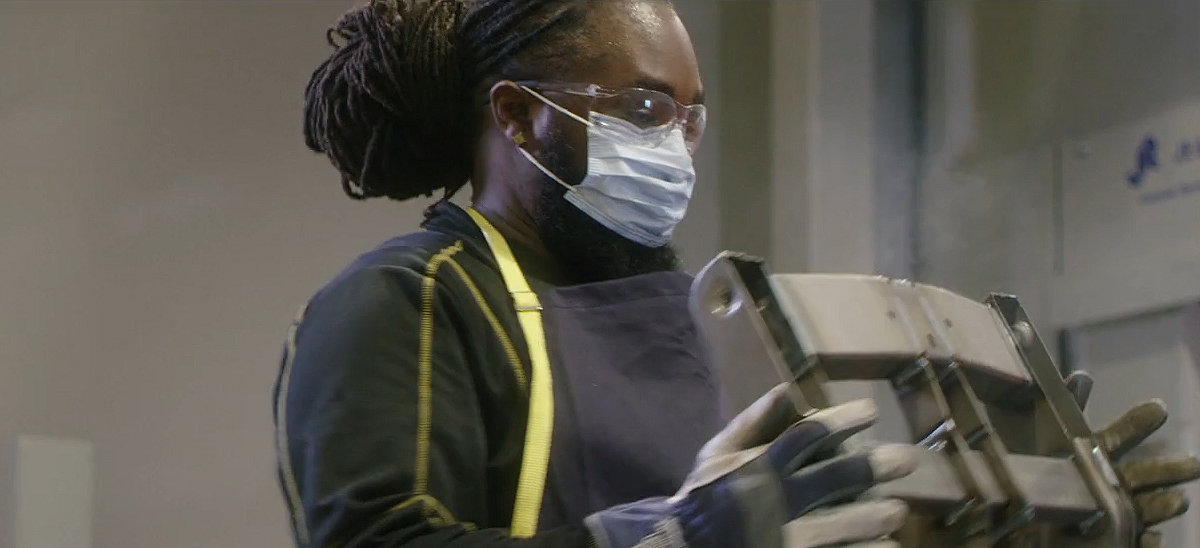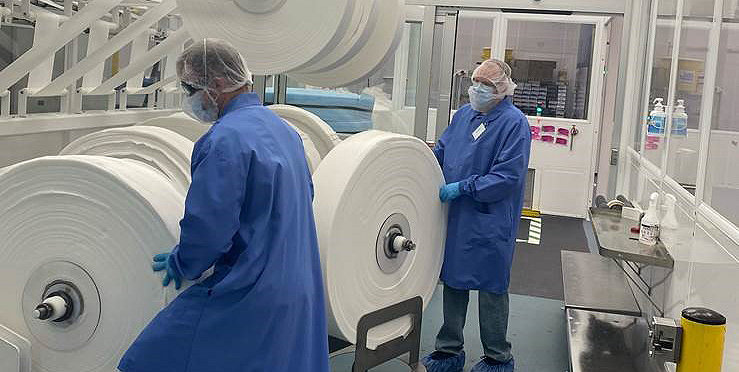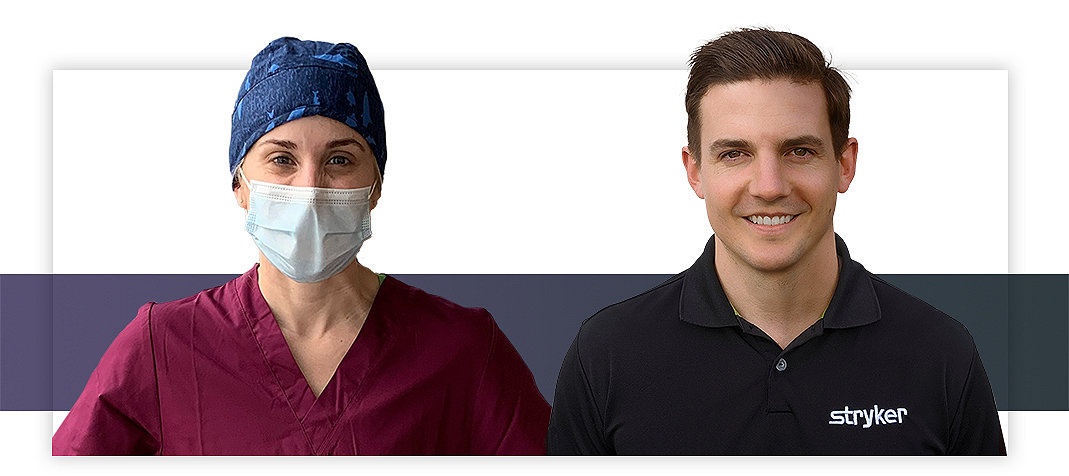COVID-19: Our response efforts

People are at the heart of what we do. COVID-19 doesn’t change that. Stryker remains focused on what we do best to support healthcare professionals on the front lines, put people first and continue delivering on our mission to make healthcare better.
We continue to meet the global pandemic challenge with resilience and flexibility, taking action to protect our employees, fulfilling our customers’ needs so they can focus on taking care of patients and working to ensure health and safety in communities.
Protecting employees
Business continuity and emergency action planning processes — already a part of our way of doing business — served as a foundation for our response planning. We implemented protocols in our China locations in January, including temperature monitoring, masks, physical distancing and notifications. As the pandemic moved across Europe, by March it became increasingly clear that an enterprise approach was necessary to protect employees worldwide. We quickly moved to halt travel and issue work-from-home guidance.

?$max_width_1440$)
Our Trauma & Extremities sales representatives were on hand to see healthcare heroes brave the early days in some of the world’s hardest-hit areas. It quickly became apparent that our customers on the front lines needed us to work and continue fulfilling their needs. We issued personal protective equipment (PPE) for all employees with essential designation working on-site at our facilities or in healthcare settings and launched a self-assessment screening process that included in-person checks at our facilities and an app for our field-based personnel.
For our on-site critical employees who continued to come into Stryker facilities worldwide to make the essential products our customers need, we reimagined workspaces and staggered breaks to support physical distancing where possible. Our personal exposure and reporting guidelines helped us utilize quarantines effectively to keep operations running while prioritizing the health and safety of our employees.
Local Incident Response Teams (LIRT), rolling up to a Centralized Incident Response Team (CIRT), were put in place to orchestrate a coordinated response. We established field protocols, including rapid testing of employees 48 hours before travel, to enable business to continue to meet customers’ needs.
By December, rapid testing was in use by more than 2,000 field-based sales personnel and expanding weekly. Efforts are underway to increase the program to include more Stryker employees as returning to work at a physical site may become possible for those individuals who pivoted to working remotely. Our response is evolving to include a vaccination strategy involving a wealth of talented clinical and scientific people at Stryker.
The combination of our educational and evidence-based strategy, followed by our proactive testing-response strategy, enabled us to support our customers and protect our employees.

Satisfying customers’ needs
The landscape continues to evolve, and we continue to adapt to meet our customers’ needs. We’ve increased our production of products to help people during the crisis, including hygiene, disinfecting and surgical protection products, as well as hospital beds, stretchers and defibrillators.
By leveraging our in-house research and development experts, we’ve launched new products essential for the COVID-19 response. We’ve also actively worked with our industry trade association and regulatory bodies to accelerate the authorization and approvals for personal protection equipment.
To help our customers concerned about the potential for a sudden flood of patients — and not enough beds on hand to meet the projected demand — Stryker raced to develop a new low-cost, limited-release Emergency Relief Bed (ERB) to serve those on the front lines of the global pandemic, ranging from hospital emergency departments to triage and pop-up areas of care. Within just seven days of conceiving the idea, employees had assembled thousands of ERBs, ready to be delivered to some of the hardest-hit locations, including New York. In August, we donated 22,500 Emergency Relief Bed (ERB) kits to Project C.U.R.E., the largest provider of donated medical supplies and equipment to developing countries worldwide.
We use technology in new ways to connect with customers and meet their needs, and continue to hold meetings and education events virtually.


©Yonemori Hospital

Keeping communities safe
Inspired by healthcare providers and one another, our employees use their time, talent and resources to offer support beyond their daily roles at Stryker. Our people donated blood through the Red Cross to help alleviate shortages and support the Sleeves Up virtual campaign when they could not leave their homes to donate blood. Employees are giving to local charities and global organizations, including the World Health Organization’s COVID-19 Solidarity Response Fund and the Red Cross. They are engaging in virtual volunteer opportunities to support nonprofits locally and around the globe.
The scope and duration of the pandemic remain uncertain. Visit our COVID-19 Resource Center for specific updates related to our products, services and employee response.

From behind-the-scenes to the front line
As patient counts at hospitals surged, the COVID-19 pandemic presented some Stryker employees with an opportunity to answer the call for trained healthcare professionals to rejoin the front lines.
In April, Morgan Goldsmith volunteered in New York at the Ryan Larkin Field Hospital (RLFH), constructed underneath the Columbia University sports complex’s bubbled dome, as an extension of New York-Presbyterian. During the five weeks she spent there, Morgan helped lead a team of 12 volunteer healthcare workers from across the U.S. “The need for clinicians was greater than ever before,” Morgan said. “As a nurse, I felt I had a responsibility to take care of fellow clinicians and their patients.”
Oliver “Ollie” Forbes, a former paramedic, works for our trauma team in Victoria, Australia, but took a chance to be redeployed to help support the healthcare system and emergency services. “When Stryker provided the opportunity to return to work in the community for a period of time, I morally felt it was the right thing to do,” Ollie said.

Morgan Goldsmith and Oliver “Ollie” Forbes
